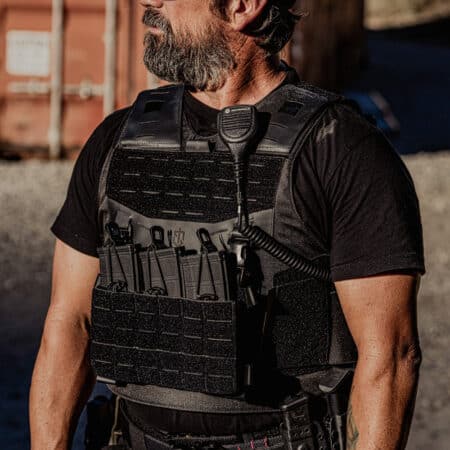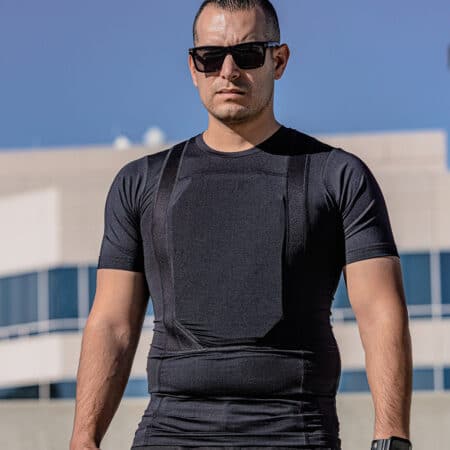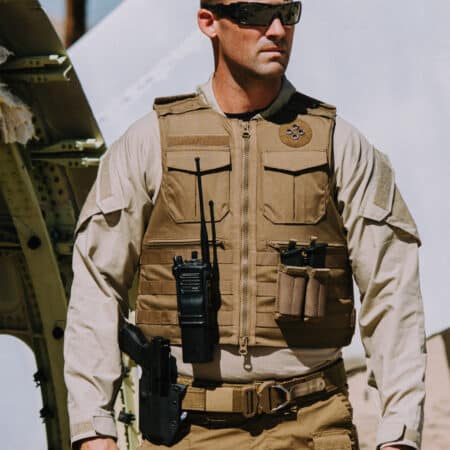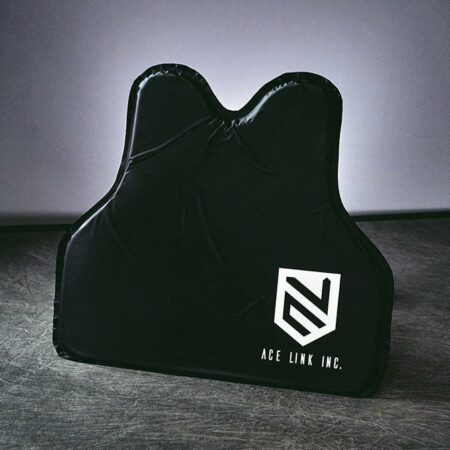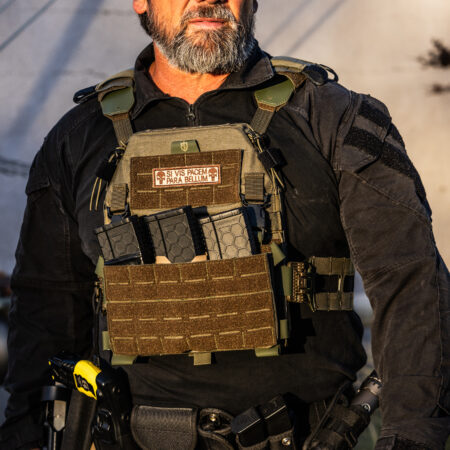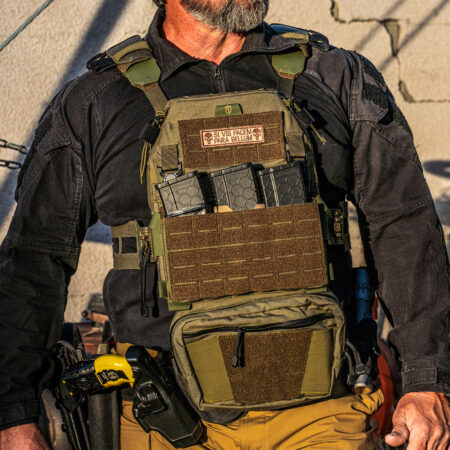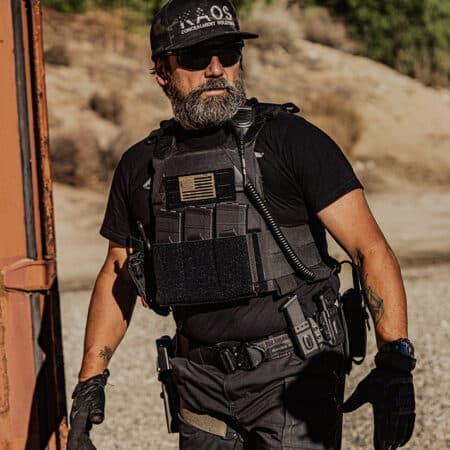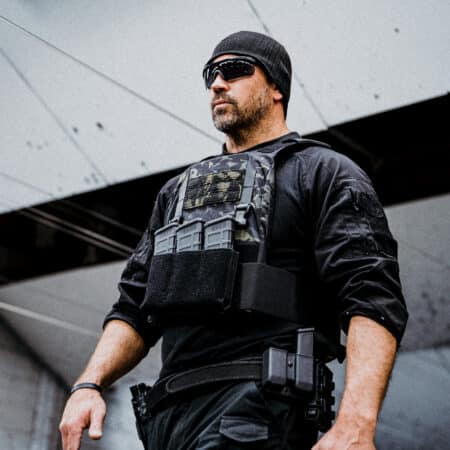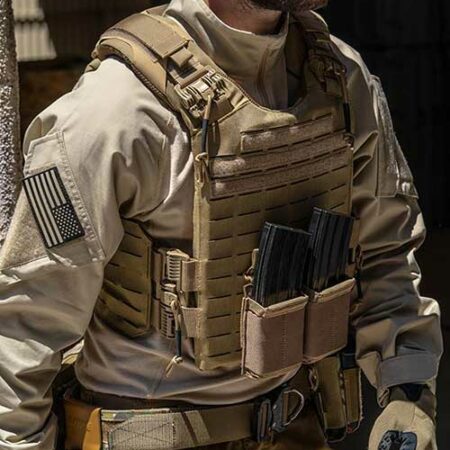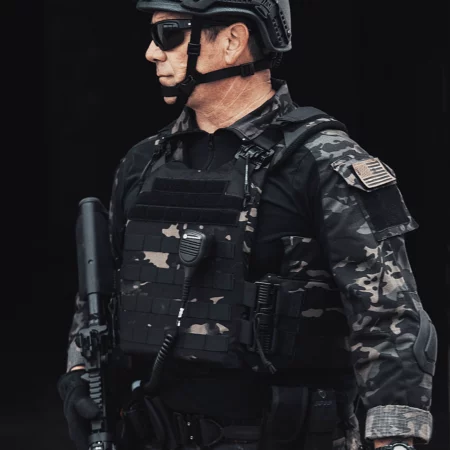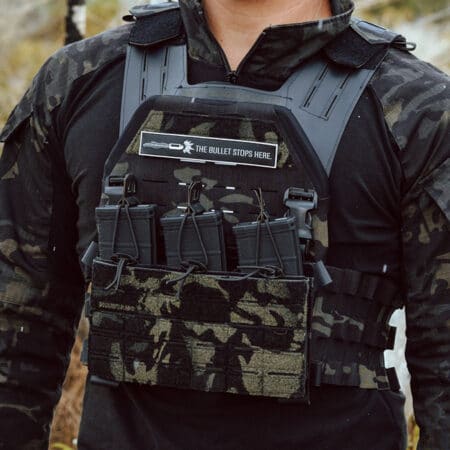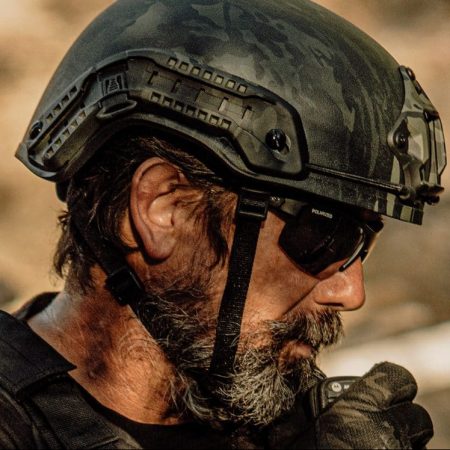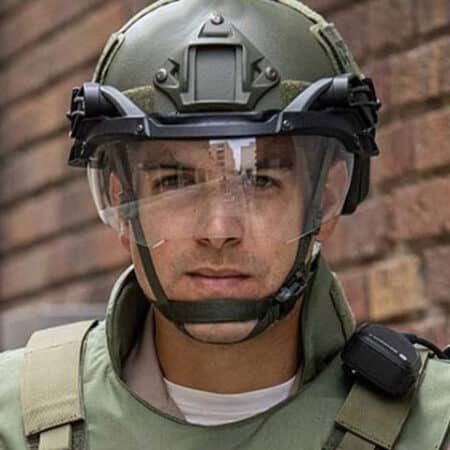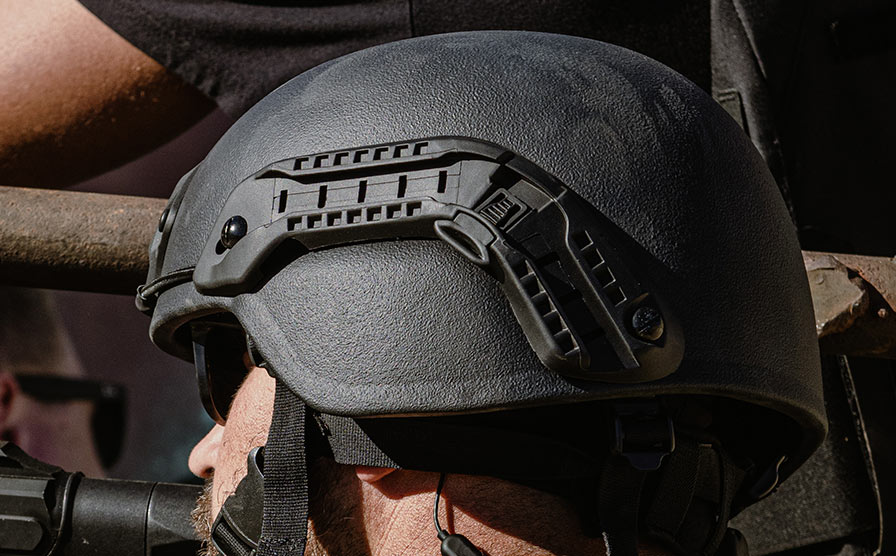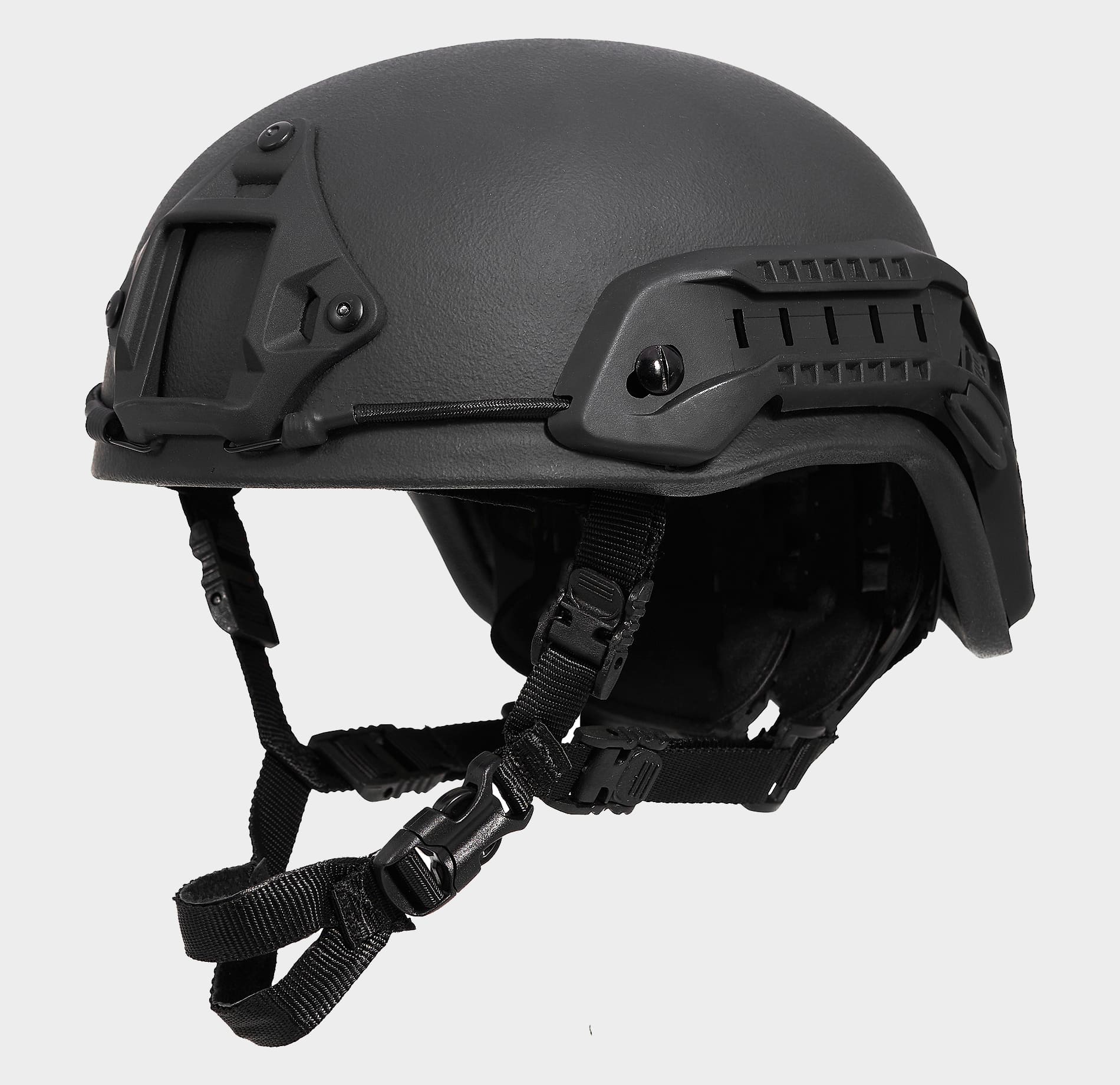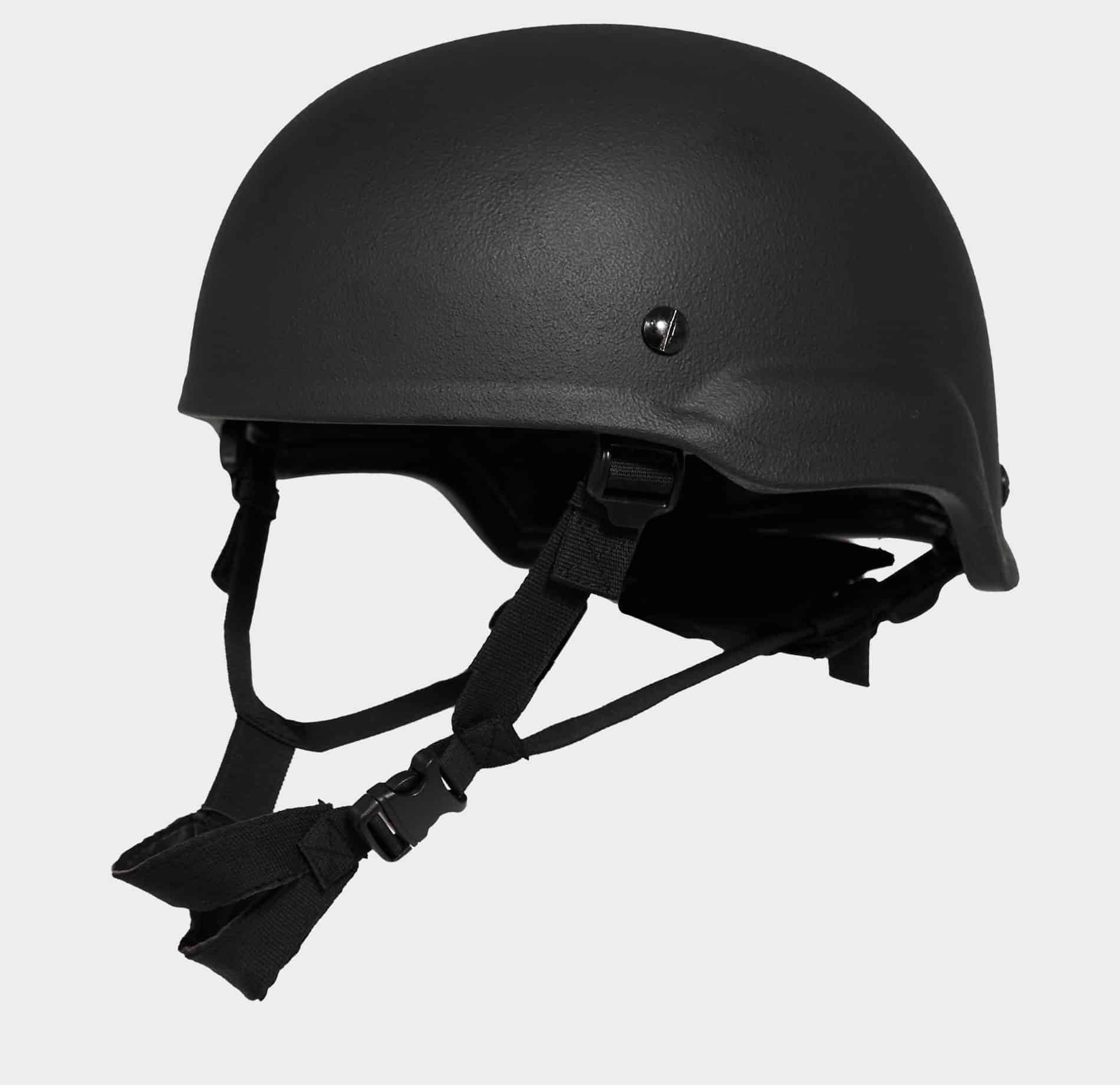- WHAT IS A TACTICAL HELMET?
- MEASURE YOUR HEAD FOR BALLISTIC HELMET
- HOW TO USE NIGHT VISION GOGGLES ON TACTICAL HELMET.
- SHOULD I MOUNT A LIGHT ON MY TACTICAL HELMET?
- WHAT ACCESSORIES CAN I MOUNT ON A BALLISTIC HELMET?
- CAN I CARRY A BALLISTIC HELMET IN MY CHECKED BAGGAGE TSA?
- WHAT IS THE DIFFERENCE BETWEEN BULLETPROOF AND BUMP HELMET?
- HOW MUCH ARE TACTICAL HELMETS?
Tactical helmets are the present and future of much-needed ballistic protection for the wearer’s cranial region. A helmet is like body armor for your skull, and a tactical helmet combines the technology behind NIJ level IIIA soft armor and places it on your head not only to protect your brain but to do so during adverse or combat situations.
Yesteryear’s flat-basin brainpans from the forests of France during WWI; to the net mesh-equipped steel pots or the camouflage print helmet covers of the battlefields during WWII. Today’s ballistic helmet- or ballistic protection helmet (since there are non-ballistic helmets that look similar, called a bump helmet) is designed to protect against handgun round penetration with minimal and safe levels of backface deformation.
WHAT IS A TACTICAL HELMET?
Today’s tactical helmet has also been developed by both laboratory researchers and manufacturing engineers alike, into the modern advanced combat helmet, with lightweight composite hardened outer ballistic helmet protection shell, worn today by military and law enforcement, and also civilians who purchase tactical ballistic helmets for training, or as home self-defense personal protective equipment. A Tactical helmet is one of the most important pieces of Armor you can possess, as it protects your head from bullets, shrapnel, and other threats.
MEASURE YOUR HEAD FOR BALLISTIC HELMET
Wearing a ballistic helmet offers protection against handguns or lesser threats in emergency situations. As important as the ballistic protection, or because of the protection a tactical helmet provides- it is crucial to have the most secure fit possible from ballistic helmets in order to maximize their protective properties and avoid ill-fitting helmets that could shift, move, or twist unnecessarily, thus exposing or compromising the ability for the helmet to do its job protecting the wearer from incoming gunfire. Measuring a person’s head in order to fit him/her properly with a helmet is vital since having a helmet that fits properly protects the wearer from injury caused by impact or debris thrown up at high speeds by incoming bullets, or in the case of the non-ballistic bump helmets, from thrown projectiles or low hanging hazards inside an enemy ship when deployed in a military or law enforcement maritime setting.
In order to determine the correct size of ballistic helmet needed, it is necessary to know someone’s exact head circumference measurement. Typically, using a measuring tape from a fabric or tailor’s supply shop, the kind of tape that is able to roll-up and is softer than a carpenter’s bulky and metallic tape measure, will allow for a more accurate measurement of the wearer’s head circumference.
Starting with placing the measuring tape 1″ above his or her eyebrow level, take the tape and make sure to keep it level when it is wrapped around the entire head’s upper area; once you have the tape meets/crosses where you started to measure in the center of the forehead- take note of the easurment. Usually an adult’s head circumference will run from 20″to 25″ inches. Once you find your head’s proper measurement, simply apply it to the manufacturer’s helmet sizing chart to determine if you are a Small to Extra Large helmet. Make sure the chin strap is firm against the wearer’s chin and does not hinder breathing or alters fit of helmet while speaking to others.
HOW TO USE NIGHT VISION GOGGLES ON TACTICAL HELMET.
Some tactical helmets come with night-vision compatible mounts that enable night vision equipment to be plugged directly into the helmet; while others have NVG shrouds that cause night vision equipment’s body to hug close enough against the helmet shell for night combat to take place. When using NVG goggles on a tactical helmet, it is recommended by NVG equipped operators and advocates alike wearing flip-up style NVG so as not to hinder one’s own situational awareness when engaging in combat or adversary target acquisition during night time operations – especially at night because of limited visibility, where even just being able to see better than your enemy could mean the difference between failure or success for your troops or yourself.
SHOULD I MOUNT A LIGHT ON MY TACTICAL HELMET?
Unequivocally, Yes. Mounting a compact, and lightweight tactical light or light with specially designed Infra Red filter is an option most tactical helmet wearers have, due to the majority of tactical helmet manufacturers adding versatile helmet rails and forward mounts to be able to let the wearer mount either tactical lights, NVG goggles, and ear protection via these rails and forward shroud.
WHAT ACCESSORIES CAN I MOUNT ON A BALLISTIC HELMET?
As previously mentioned, today’s tactical helmets are provided to the wearer with accessory mounts, rails, forward shroud, and multiple places to apply adhesive-backed hook and loop panels, in order to mount tactical light(s), battery packs, NVG, or protective face shields on forwarding shrouds, as well as passive or tactical electronic ear protection mounted via side rails. Veteran-owned manufacturing companies of such accessories including Sure Fire LLC, U.S. Night Vision, TCI Communication devices, etc., are some leading brands popularly mounted on various tactical helmet brands such as Hard Head Veterans, etc. and nonballistic helmets or sometimes called “bump helmets”- that are in use by the ground troops of the armed forces, as well as law enforcement tactical teams across the nation and the world.

LEVEL IIIA BALLISTIC VISOR FOR TACTICAL HELMET
With the weight of a mere 3 pounds, this sleek and stylish visor is made out of an unbreakable poly-carbonate material that provides protection against bullets and fragments.
It has been rigorously tested for military standards in accordance with STANAG 2920 stringent testing requirements, ensuring it can withstand high levels on impact without any damage to its structural integrity.
This Poly-Carbonate Ballistic Visor offers level IIIA ballistic protection, which means that it can stop most pistol calibers. It has a 4-way adjustable mounting system to bring the shield closer or further away from your face, as well as up and down.
This Visor comes with adjustment system that makes it easy for you to switch between 3 different locking positions at any time on the fly! Straight ahead, halfway up, or straight over head? You decide how high and far your helmet should be pushed back by using this convenient pin adjustment system right in front of you.
CAN I CARRY A BALLISTIC HELMET IN MY CHECKED BAGGAGE TSA?
The U.S. Department of Homeland Security- Transportation Security Administration, does not prohibit travelling across the nation -or its territories-with NIJ level IIIA armor in person’s checked baggage, or inside carry-on luggage bag. TSA screeners; however, are still left to decide ultimately if level IIIA armor or ballistic helmets can be checked in or carried on by a passenger through their checkpoints. In theory, soft or hard armor and helmets are defensive in nature, and inherently do not pose a direct risk or threat to those traveling or providing transportation according to the government.
WHAT IS THE DIFFERENCE BETWEEN BULLETPROOF AND BUMP HELMET?
The common combat helmets are a protective devices worn to safeguard the user’s head from trauma and injury; most modern types of lightweight helmets for sports, games, competitions, and combat also have advanced padding and padded materials inside their liners that work along with a helmet’s secure neck, and chin straps that are designed to keep the helmet safely but comfortably onto the wearer’s head for superior protection. If you wear such a helmet, you can rest assured modern technological advances have been applied to the design of even a non-ballistic bump-type helmet. Bump helmets are designed to create a safety margin between impacts and your cranium- the shell-styrene type foam- and the inner padding of a bump helmet blocks, absorbs, and disperses blunt force shock from allowing harmful traumatic shock waves onto and within a person’s skull and brain matter- kind of impact can cause TBI, or Traumatic Brain Injury, protection that keeps concussive injury to the absolute minimum.
More specially designed helmets called ballistic helmets have the same basic properties as a bump helmet, but instead of basic blunt force trauma protection from hard surfaces or objects- the ballistic helmet is comprised of NIJ level IIIA bulletproof materials that are able to stop and defeat most handgun round threats or explosive fragments- with the same method of blocking or absorbing , then capturing ballistic projectiles from penetrating through the inner lining of the shell’s aramid fiber composite- thus preventing severe back face deformation of the inner lining and resulting serious injury or possible death from penetration or blunt force trauma to the tactical helmet wearer.
HOW MUCH ARE TACTICAL HELMETS?
Helmets found in today’s tactical equipment online shops can run from the low hundred(s) of dollars for older model ballistic or bump type helmets, to approximately even $1,800.00 retail price for a superior blunt impact performance helmet. There are also available more reasonably priced options – good quality helmet can be found online for as low as $300-400.
You can find more information about tactical helmets and other combat helmets in other sections of our website (www.acelinkarmor.com). We offer a wide variety of personnel armor system (s).




